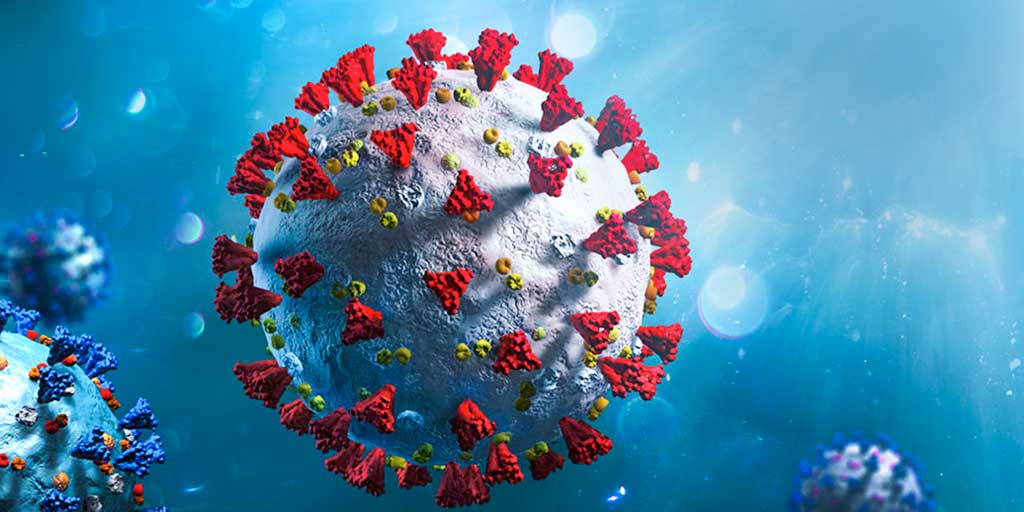
As SARS-CoV-2 continues to evolve, one lesson is painfully clear: immunity today may not guarantee protection tomorrow. Viruses are experts at mutating into countless variants to evade detection or neutralization by the immune system. In the race to keep up with this “immune escape”, researchers have largely focused on reactive strategies—testing vaccines against variants that already exist. But what if we could flip the script and anticipate where the virus is going next?
That’s precisely the aim of a new study published in Immunity. This study introduces EVE-Vax, a computational design platform that builds synthetic spike proteins capable of mimicking immune escape mutations—before they naturally arise.
A Computational Crystal Ball for Immune Escape
The EVE-Vax pipeline combines three biologically relevant constraints—viral fitness, antibody accessibility, and structural dissimilarity—to predict which spike mutations are most likely to evade immune recognition. Using this framework, the researchers designed 83 multi-mutant SARS-CoV-2 spike constructs, each harboring up to 46 mutations compared to the original B.1 variant.
Remarkably, 90% of these designs retained infectivity in vitro—an impressive feat, considering that combining many mutations usually diminishes protein function. In addition, some EVE-Vax designs closely resembled variants like XBB and CH.1.1, which wouldn’t emerge in the wild until months later.
Testing Designed Spikes Against Real-World Immunity
To evaluate their predictive power, the team tested neutralization resistance of the designed spikes using sera from vaccinated individuals, convalescent patients, and non-human primates. Many of the constructs displayed neutralization resistance on par with or even exceeding that of real-world variants.
For example, one B.1-based design showed greater escape than Alpha, Delta, and Gamma—well-known variants that circulated globally during the COVID-19 pandemic. In several cases, EVE-Vax constructs even foreshadowed the antigenic profiles of future lineages such as HV.1 and JN.1.
A Powerful Tool for Vaccine Testing
What makes EVE-Vax particularly exciting is its potential use in proactive vaccine evaluation. By testing immune sera against synthetic constructs that represent possible future variants, researchers can better assess the breadth and resilience of next-generation vaccines.
The authors demonstrated this by comparing responses to bivalent mRNA boosters and nanoparticle-based vaccines in non-human primates. Mosaic nanoparticle vaccines elicited broader neutralizing antibody responses against both natural and EVE-Vax–designed variants, suggesting they may be more resilient to viral evolution.
More Than a Forecast—A Blueprint for Action
Importantly, EVE-Vax constructs also rivaled designs created using labor-intensive deep mutational scanning (DMS) methods. In fact, the computational pipeline identified high-risk escape mutations with fewer total mutations per spike—without needing prior knowledge of antibodies or patient sera.
This positions EVE-Vax not just as a forecasting tool, but as a rapid, resource-efficient alternative for guiding antigen design and vaccine development. And while the current study focused on SARS-CoV-2, the authors propose that the platform could be adapted for other viral threats, including influenza and Lassa virus.
Looking Ahead
This study demonstrates that computationally designed spike proteins can effectively predict future variants, enabling researchers to assess vaccine efficacy in advance and better prepare for potential immune escape.
However, there are still many challenges ahead. For example, immune escape relies on access to a broad and diverse dataset of viral sequences, which may not be available for all viruses. Additionally, the current model emphasizes antibody-based immunity and does not account for other important aspects of the immune response, such as T-cell activity. Still, as viruses continue to surprise us, tools like EVE-Vax offer a promising way to stay one step ahead.
Featured Products: Steady-Glo® and Bright-Glo™ Luciferase Assay Systems were used to measure pseudovirus infectivity and antibody neutralization in this study.
Reference: Youssef, N. et al. (2025) Computationally designed proteins mimic antibody immune evasion in viral evolution. Immunity 58, 1411–1421
